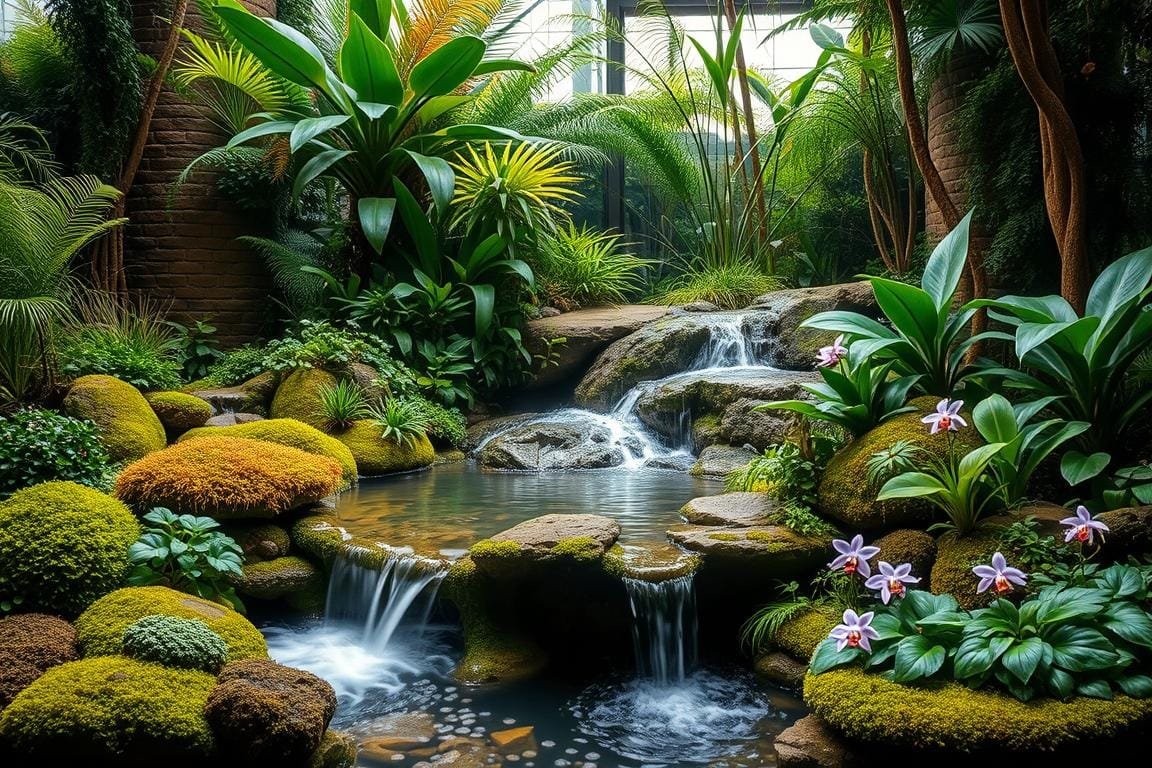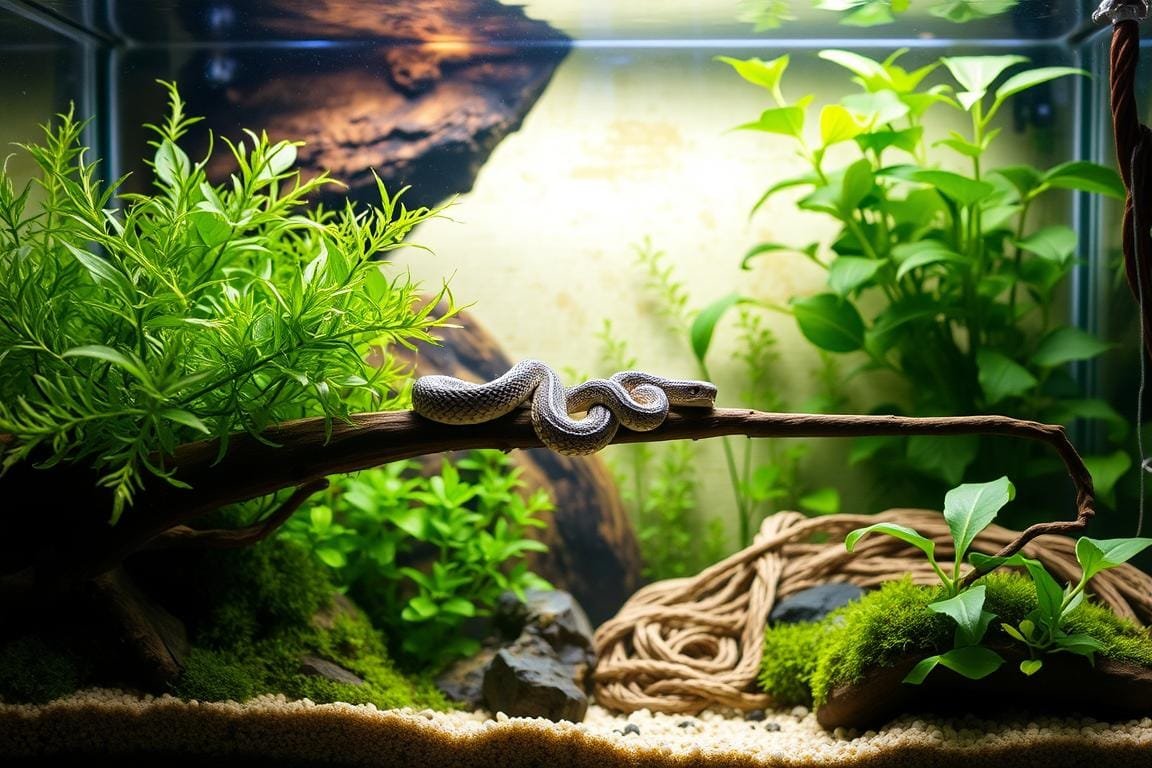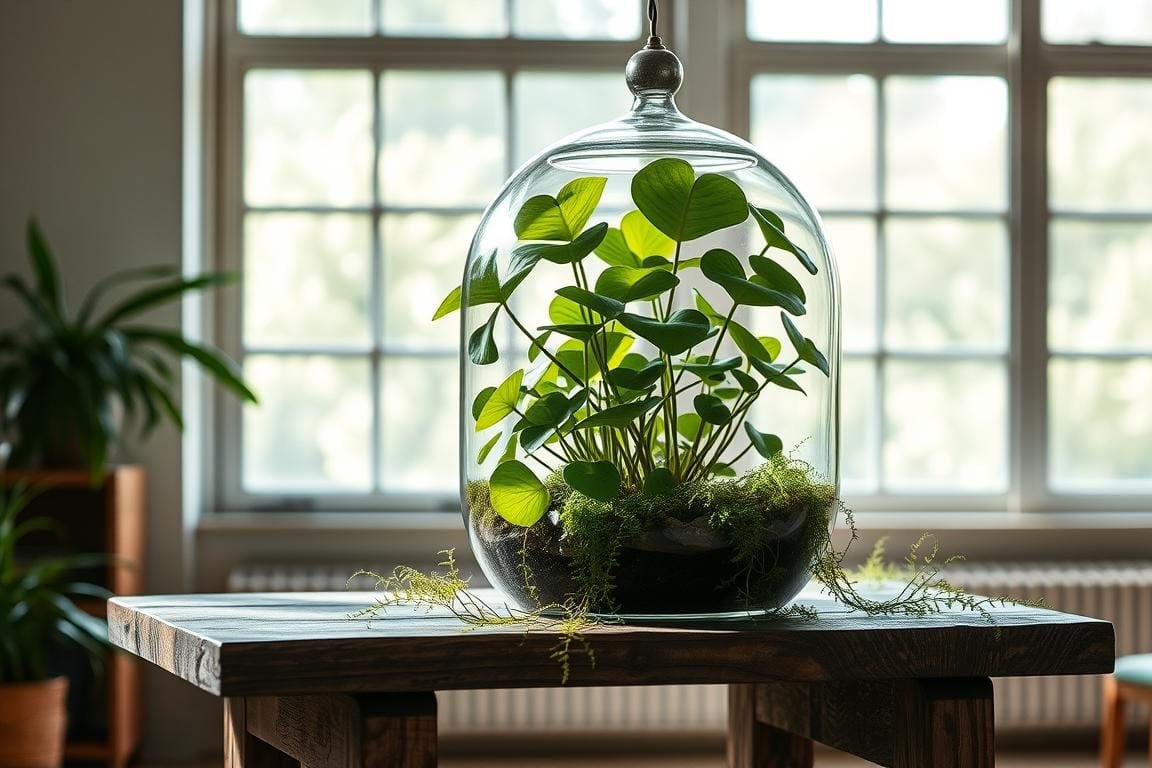Creating a blended ecosystem at home has never been more exciting. The paludarium, which mixes water and land habitats in one tank, lets you design stunning natural scenes. Unlike standard aquariums or terrariums, this hybrid setup supports both aquatic life and moisture-loving plants.
Modern designs like the UNS Rimless Paludarium show how sleek glass containers can transform any room. These tanks often feature cascading waterfalls, shallow pools, and elevated planting areas. Proper lighting choices help highlight textures while promoting healthy growth.
Balancing water depth and dry space is crucial. Too much liquid might drown terrestrial plants, while insufficient moisture harms aquatic species. Start with a clear plan for your container layout to avoid common pitfalls.
Beginners often love the creative freedom these projects offer. You can craft miniature rainforests, rocky coastlines, or tranquil marshlands. Just remember: consistent care ensures your ecosystem thrives long-term.
Ready to dive deeper? Our upcoming sections break down equipment choices, plant selection, and maintenance routines. Let’s build your dream habitat together!
Planning Your Aqua Vivarium Design
A successful paludarium begins with thoughtful planning and a clear environmental vision. Start by choosing which natural scene you want to recreate – will it mimic a misty rainforest floor or a sun-dappled riverbank? This decision shapes every element, from water depth to plant varieties.
Defining Your Vision and Environment
Consider how much land versus aquatic space your animals need. Tree frogs thrive in vertical setups with climbing branches, while turtles require ample swimming areas. Use vivarium construction basics to calculate proper drainage layers and substrate depth for root systems.
Selecting Aquatic and Terrestrial Elements
Combine moisture-loving ferns with floating plants like water lettuce for visual contrast. Always verify species compatibility – some fish nibble delicate roots, while certain crabs rearrange landscaping. Your tank’s layout directly affects humidity levels and air circulation, so test different rock formations before finalizing.
Pro tip: Sketch your design on paper first. Mark waterfalls, shallow pools, and dry zones to ensure balanced proportions. This prep work saves hours of adjustments later!
Essential Supplies and Equipment for a Successful Setup

Equipping your hybrid habitat starts with smart gear choices. Every paludarium thrives when three core elements align: sturdy tanks, balanced substrates, and reliable hardware. Let’s unpack what you’ll need to bridge land and water ecosystems effectively.
Choosing the Right Tank, Substrate, and Planting Materials
Start with a glass container sized for your vision. A 20-gallon tank suits small setups, while 40+ gallons allow complex aquascape designs. Pair aqua soil for aquatic zones with coconut fiber for dry areas—this combo supports root growth and moisture control.
Add drainage layers using lava rocks or mesh grids. These prevent soggy soil while letting excess water flow into reservoirs. For planting, mix floating species like duckweed with terrestrial mosses to blur the land-water divide.
Lighting, Filtration, and Other Hardware Essentials
LED lamps with adjustable brightness mimic natural daylight cycles. Position them to spotlight ferns without overheating the tank. Submersible filters keep water clear, while misters maintain humidity for tree-dwelling animals.
| Equipment | Purpose | Recommended Use |
|---|---|---|
| Glass Tank | Holds ecosystems | Choose rimless for clean looks |
| Aqua Soil | Nutrient-rich base | Use in submerged plant zones |
| LED Lamps | Promotes growth | 6500K color temperature |
| Canister Filter | Water clarity | Size for tank volume |
| Drainage Layer | Prevents rot | 2-inch lava rock base |
Understanding Water, Soil, and Drainage Considerations
Test water weekly for pH and hardness—driftwood naturally softens it. Use siphon tubes for partial changes without disturbing the substrate. Elevate land sections with slate stones to create dry retreats for climbing species.
Remember: Your equipment choices shape daily maintenance. Invest in quality tools now to enjoy a self-sustaining display later!
Building Your Aqua Vivarium: A Step-By-Step Guide

Transform your empty tank into a thriving ecosystem with this hands-on construction plan. We’ll walk through creating stable foundations, artistic layouts, and functional water features that mimic nature’s balance.
Laying the Foundation and Setting Up Drainage
Start by filling the bottom third of your tank with lava rocks or drainage mesh. This layer prevents root rot by directing excess water to a reservoir. For detailed plumbing guidance, consider flow rates matching your filter capacity.
- Install submersible pumps behind hardscape to hide equipment
- Test waterfalls using temporary tubing before final placement
- Slope the substrate upward to create dry land areas
Arranging Hardscape and Planting for a Natural Look
Position driftwood and slate stones to form climbing structures for animals. Angle rocks to create sheltered caves and visual depth. When planting:
- Secure moisture-loving ferns near waterfall spray zones
- Use floating plants to soften pond edges
- Leave open swimming space for aquatic species
Complete your rainforest vibe with warm lighting angled at 45 degrees. Let the system run empty for 48 hours to make sure temperatures and flow rates stay consistent. Now you’re ready to introduce life to your living masterpiece!
Final Touches and Next Steps for Your Aqua Vivarium Adventure
Your living masterpiece nears completion with bioactive helpers and artistic details. Introduce isopods and springtails to naturally break down waste—these tiny custodians keep soil healthy while reducing manual care. Attach moss to cork bark or driftwood to soften hard edges, creating instant rainforest vibes.
Cycle your tank for 4-6 weeks before adding fish or climbing animals. Test water parameters weekly, adjusting lighting duration as plants establish roots. Add finishing touches like miniature waterfalls using submersible pumps hidden behind slate rocks.
Share your aquascape journey in the comments below! Whether crafting a misty mountain stream or tropical bog, your blend of land and aquatic zones brings nature’s balance home. What unique habitat will you design next?





